Hello,
I’m very glad to hear that your cardio appointment went so well. Consider that a HUGE win! It gives everyone a huge sigh of relief in everything you do moving forward. As far as the possible pyo goes I would strongly recommend you call your vet ASAP and be seen by them. Schedule her spay based on this exam and your vets concern about whether it meds to be done immediately or whether it can wait for your scheduled surgery date. Abnormal discharge is abnormal. A sick (lethargic, inappetant, or depressed) dog should be seen immediately. We have an old saying in vet med “never let the sun set on a pyo”. Or another words you don’t wait a day to treat! Good luck. Keep us posted.
I have a cat 10 years of age, Flash. He had a tumor that was detected after he chewed on his privates and was unable to pee. I took him to the vet and was told they had to remove tumor and his male parts. So after spending about 1500.00, a discount because I also had my other cat that cost 500 for shots and fixing and chipped. After about two months my cat once again had issue peeing. I am now told it will cost another $2000 to do another surgery where they will make a knew opening. I am at ends wit because I can’t do another $2000 when thinking the first surgery was to fix the issue. Was something not done correctly the first time? All I am told is that he heals too fast and the tissue is weak and can’t maintian an opening to pee needing a new one.
Comments
Hi, I just had a scare with my mini 10yo Pomeranian, diagnosed with CHF heart murmur 5/6, but went to the cardiologist and said she has grade 2 murmur, no CHF, but mitral valve disease… During this whole thing, I noticed a bump on her nipple, and mentioned it to the vets, but wasn’t worried enough cus there was so much going on w her heart. Now that we got that cleared up w Cardio, I’ve caught my breath but am even more anxious to think she has Pyometra. I’ve been noticing sticky, red discharge from her vagina for a while now, mentioned it to cardio vet, had no comment. I had mentioned it to her regular ver before, and butt scooching, and they cleaned her anal glands. I am beyond anxious and so scared to lose my baby girl. I have an appointment for her to be spayed, which I was already anxious about due to her age and enlarged heart, but now I feel so hopeless and I’m sorry but I’m having trouble trusting vets… i know I shouldn’t say this but how has no one caught anything… Its a much longer story, I’m sorry. I noticed today a lot more discharge, it used to just accumulate a bit in her vag, but noticed it across her bum today… It was hard to tell at first cus she’s black, but I just don’t know what to do. Should I reschedule spay appointment earlier? Anyone, please help me… Not even sure how this site works… found it online researching Pyo…
photos are kinda graphic, sorry..
Comments
Comments
Comments
My cat was taken in to the vet in May to treat allergies, difficulty breathing (snoring sounds) and a head tilt. Was given an anti inflammatory, antibiotic (convenia), vitamin b-12, ear drops, and an X-ray. Diagnosed with asthma brought on by allergies. Lungs ok. Three weeks later breathing and itching had improved, but third eyelid started showing.
Vet would not see him and said to go to a specialist.
Took the cat for a second opinion. That vet said we should check for nasal polyps. Was sedated and had an exam of ears and throat. No polyps were visible. Vet felt a small enlarged area under the soft palate, but could not confirm this was a polyp. Head tilting stopped after first visit. Recurred a few days ago. Not present now. Second vet recommended going to a specialist for ct scan. It is cost prohibitive and I’m not sure it is necessary. Third opinion from an online site recommended we try antibiotics for the respiratory issues. Started on one antibiotic today for ten days. And started on purina fortiflora.
Looking for any other advice or experience with issues like this. I’ve never had a cat with these problems.
Thanks.
#cats #nasal #headtilt #respiratory #polyps
Comments
My cat has thrown up 3 hairballs in the past week. This started after we had began packing to move, he has also had a diet change. I noticed no other problems with him. Could this be due to stress or is it something bigger?
Comments
I’ve got a 9 week old puppy at home, she is passing stools normal colour not to much but is crying when trying to pass. She has been wormed and I’ve just given her, another one as requested by previous owner. Will this fade eventually once worms are killed she is scooting her bum on the floor too
Comments
Two days ago my 8 month old puppy had diarrhea & little pieces of his buffalo chew horn in it. I took away the horn & threw it away bc I didn’t like the fact that he was swallowing pieces. I assumed the diarrhea was from irritation of not being able to digest it. He had no diarrhea yesterday & was totally fine. This morning I woke up to diarrhea on our floor & later he threw up a small amount. His throw up had another little piece of the buffalo horn in it. He is still acting like his very hyper self & is drinking & eating like normal. My question is do you think his stomach is still just a little irritated & trying to get back to normal? Or is this something I should be really concerned about & get him seen?







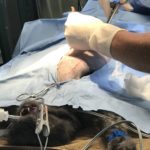
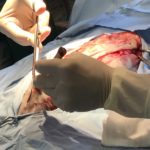
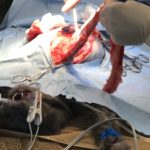
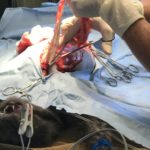
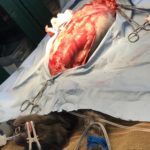
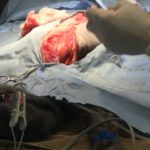
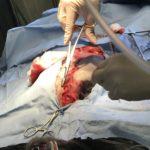
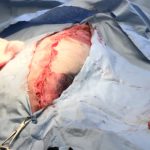
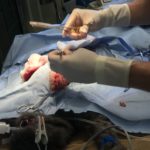




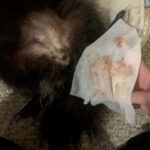
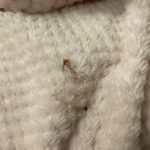






@kristamagnifico any thoughts on my situation? I have been following you and can see your passion and honesty
Hello,
I’m sorry but I am not quite sure what is going on here. I think that I would recommend that you get a second opinion from a feline specialist or a vet your friends or family recommend. Or go back to your vet and ask for assistance in exposing what’s going on and why?
I think you need some clarification before making any big decisions. In the meantime you can ask about intermediate palliative care. Please keep me posted on progress and good luck!